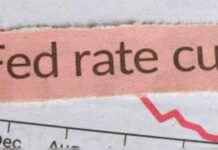Government Capex Growth Predicted to Slow Down in FY26: Goldman Sachs Report
MUMBAI: In a recent analysis by foreign brokerage firm Goldman Sachs, it has been predicted that the growth of government capital expenditure (capex) is set to slow down in the upcoming financial year 2026. This revelation comes just ahead of the Union budget announcement, adding anticipation and intrigue to the economic landscape of the country.
Anticipated Changes in Public Capex and Fiscal Deficit
According to the report, Finance Minister Nirmala Sitharaman is expected to unveil a 13 per cent increase in public capex for the new fiscal year, a decline from the 17 per cent growth seen in FY24. This shift in trajectory follows a period of robust expansion in the preceding years. The government is projected to adhere to the fiscal consolidation roadmap by further narrowing the fiscal deficit to 4.5 per cent of the Gross Domestic Product (GDP).
Goldman Sachs foresees a reallocation of expenditure towards rural transfers and welfare spending due to the Bharatiya Janata Party’s reduced majority in Parliament. The report also attributes the recent multi-quarter low of 5.4 per cent in real GDP growth for the September quarter to a combination of sluggish public capex and the Reserve Bank of India’s restrictions on credit growth.
Projections and Expectations for the Future
“We expect capex growth to decelerate to 13 per cent from the previous levels of over 30 per cent witnessed in FY21-24, with a potential shift towards welfare expenditure or transfer payments,” the brokerage stated. As the report suggests, the era of rapid growth in public capex may be waning, with future growth rates expected to align with or dip below nominal GDP growth rates.
The government’s goal of reducing the fiscal deficit to 4.5 per cent in the base case, down from 4.9 per cent in FY25, is highlighted as a crucial objective by Goldman Sachs. The report emphasizes that the central government’s fiscal stance will act as a hindrance to growth in the upcoming fiscal year, underscoring the significance of fiscal consolidation.
Implications for Economic Policy and Long-Term Vision
In addition to the anticipated changes in public expenditure and fiscal deficit, the upcoming budget is expected to address crucial aspects such as public debt sustainability, India’s energy security versus transition needs, and the government’s economic policy towards the nation’s 100th year of independence in 2047. Nirmala Sitharaman’s budget is likely to emphasize job creation, support for Micro, Small, and Medium Enterprises (MSMEs), rural housing initiatives, and the stabilization of the domestic food supply chain to manage price fluctuations effectively.
As the country gears up for a period of transition and recalibration in economic policies and priorities, the insights provided by Goldman Sachs offer a glimpse into the potential trajectory of government spending and fiscal management in the upcoming financial year. With expectations running high, all eyes are on the Union budget announcement for further clarity and direction in India’s economic roadmap.























